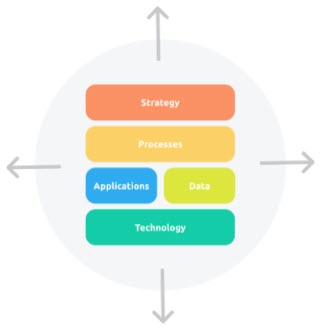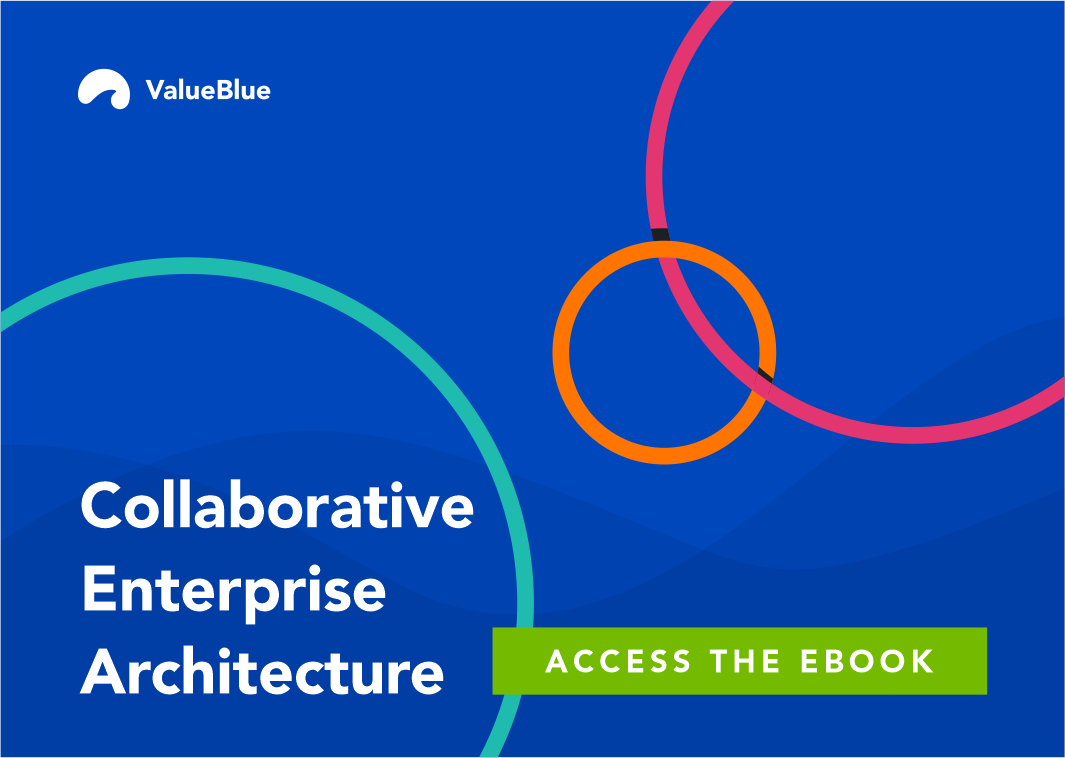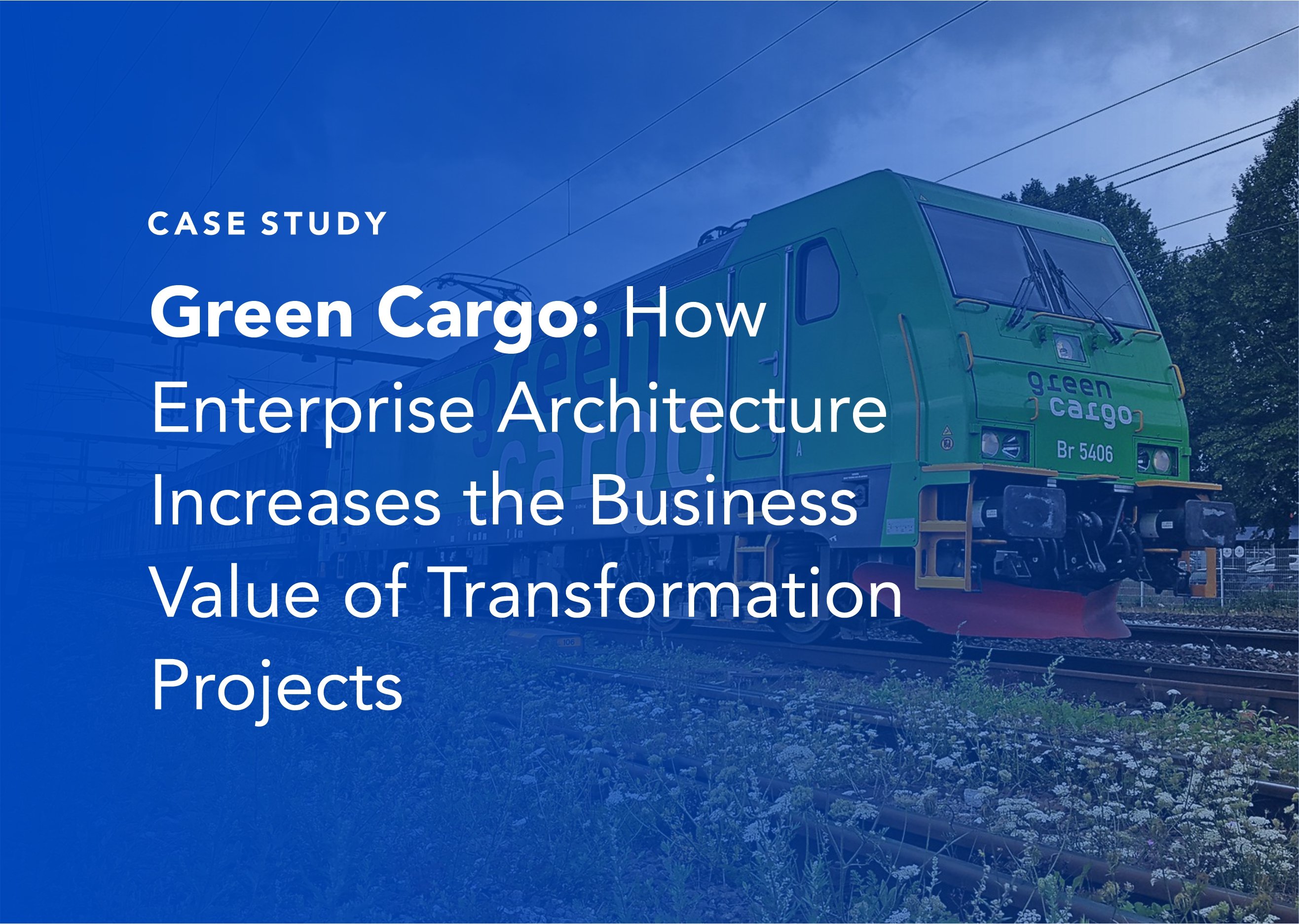3 Approaches to Achieving Agile Enterprise Architecture
Enterprise Agility: A Prevalent Theme that’s Difficult to Achieve
Agile methodology is now so common that it’s embedded in the technology of most companies and regularly applied to organizational and project management strategies as well. It’s shown to minimize risk and ensure that desired business outcomes are realized.
But an organization that’s really, truly ‘agile?’
That’s easier said than done.
Even when entire organizations stand behind agile approaches, genuine operational enterprise agility is difficult to achieve.
There are many barriers to overcome: cultural hurdles, stakeholder cooperation, and process integrations, to name a few. Agile transformations require the redesign of work practices, roles, and hierarchy in order to improve efficiency and rely on the collaboration of multiple teams and departments that often don’t share the same zeal for the end goal: agility.
It’s challenging, but agile flexibility is fundamental for IT
 Nothing worth having ever came easy. Agile flexibility enables IT teams to anticipate change and spearhead organizational innovations.
Nothing worth having ever came easy. Agile flexibility enables IT teams to anticipate change and spearhead organizational innovations.
From implementing a cloud-first strategy to rationalizing legacy, end-of-life systems, flexibility is the first port of call for every forward-thinking IT team.
Uncompromising and poorly managed IT projects cause serious problems for a company’s ability to expand on existing – or, implement new – value chains.
This is why most IT and technology leaders agree that one of the most important outcomes of digital transformation is an IT department that is fully capable of supporting the organization’s entire digital strategy. So, the TL;DR: agile Enterprise Architecture is easier said than done, but simultaneously a critical capability. Yikes.
Let us help by introducing you to three approaches that – in our experience working with many organizations globally – commonly help to expedite the process towards achieving agile Enterprise Architecture.
1. Collaborate for more efficient innovation
You’ve heard it before – we’re in the era of digital transformation. We need to be able to effect change faster and in shorter cycles than before in order to keep up with the speed of technological developments. For innovation to work, as many – motivated – stakeholders and employees as
possible need to be involved, and they need to work together towards the common goal. Instead of operating from one central team, innovation needs to become decentralized – the entire organization should feel responsible for transformation initiatives, with everyone involved in achieving the goals. Never before was collaboration so key.
Of course, at the same time, as an organization, you need to be able to continue to transform in a structured way – which demands a communication and collaboration channel for this decentralized innovation and ensures it all contributes to the business goals. That’s where collaboration for Agile Enterprise Architecture comes in.
From an IT perspective, software and tooling that facilitates collaboration between team members and departments are essential. This allows the entire organization to be more flexible and agile in managing, executing, and monitoring projects. Tools must be easy to use, with low barriers to entry and a strong user experience to encourage company-wide adoption. A sense of shared ownership is essential. And these conditions apply not only to the tooling provided by IT to the rest of the business – but also to the tooling used by IT itself. Enterprise, Solution, and Technical Architects need collaboration and input from their colleagues – both inside and outside – in order to plan, manage and execute digital transformation initiatives. Ultimately, collaboration is the cornerstone of what makes digital transformation a success. An organization will transform most effectively when stakeholders work together to achieve common goals. This approach helps organizations on their way to agile Enterprise Architecture.
2. From reactive to agile Enterprise Architecture with current state mapping
Businesses can only be “transformed” in the context of how they operate today. Determining the current state of the organization’s Enterprise Architecture requires a clear and comprehensive understanding of the business functionalities and capabilities, the existing technology stack and application landscape, business process flows, and a comprehensive data catalog. But is understanding these architectural elements alone enough? When it comes to transformation, certainly not. Value is only realized when the “as is” architecture can be fed back into strategic organizational priorities to guide change.
Your IT architecture is a web of interdependencies:
-
Which business process relies on which software applications? If an application is removed, which process(es) does that impact or put at risk?
-
Based on the organization’s strategic goals, which IT project(s) must be prioritized? What business capabilities do these require? Will business processes change as a result?
Impact assessment can be difficult to determine and even seem endless, particularly in larger enterprises. Therefore, a clear analysis or blueprint of the current state is essential not only for your ongoing architectural governance but also for guiding strategic decision-making.
The added value here of using that current state mapping to guide your strategic decision making is the ability this gives you to make structured changes – this is agile Enterprise Architecture. Because the current state is already fully worked out and captured in the current state architecture (sometimes referred to as IST-architecture), working in a structured way on the desired future state (or SOLL-architecture) becomes much easier.
3. Balancing transformation with day-to-day operations
Most technology leaders, executives, and architects face the challenge of striking the right balance between strategic transformation initiatives and effective management of day-to-day operations. How much do we support versus how much do we direct? How much do we set the pace versus how much do we follow the lead?
Architectural guidelines and documentation are more important than ever before, but over-documentation can be the kiss of death for successful transformation. At ValueBlue, we advocate a ‘just enough’ approach to project design.
Luckily, this goes hand in hand with your agile approach. The powerful combination of top-down oversight and bottom-up execution helps on your quest for agile Enterprise Architecture.
By focusing first and foremost on the value delivered to the customer, your architecture can be prioritized based on your organization’s capability mapping. Which projects are most strategic, and where are their processes at risk? Do we have missing capabilities, or is there application risk? Quickly make high-impact operational changes while keeping strategic objectives front of mind.
It’s important to note here that an integrated overview of your current state architecture is necessary to achieve this balance effectively – so don’t disregard the current state mapping step covered earlier in this post; rather, take these three approaches into consideration as you plan your own journey towards agile Enterprise Architecture. Want to read more? In our most recent eBook, ‘When digital transformation hurts – turning complexity into an agile organization,’ we explore the challenges posed by digital business transformation and why enterprise agility is key to transformation success.


.png)
